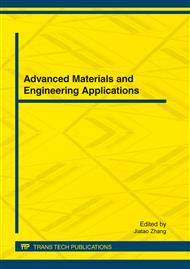[1]
D. Liua, S.Q. Zhang, A. Li, H.M. Wanga, Microstructure and tensile properties of laser melting deposited TiC/TA15 titanium matrix composites, Journal of Alloys and Compounds. 485 (2009) 156–162.
DOI: 10.1016/j.jallcom.2009.05.112
Google Scholar
[2]
W. P. Jiang, P. Mollan, Nanocrystalline TiC powder alloying and glazing of H13 steel using a CO2 laser for improved life of die-casting dies, Surface and Coatings Technology. 135 (2001) 139-149.
DOI: 10.1016/s0257-8972(00)01075-6
Google Scholar
[3]
H.J. Bohm, A short introduction to basic aspects of continum micromechanics, Mechanics of Microstructured Materials. 55 (2004) 26-56.
Google Scholar
[4]
D.D. Gu, Y.F. Shen, Influence of reinforcement weight fraction on microstructure and properties of submicron WC-Co/Cu bulk MMCs prepared by direct laser sintering, Journal of Alloys and Compounds. 431(2007) 112–120.
DOI: 10.1016/j.jallcom.2006.05.044
Google Scholar
[5]
J.K. Kim, X. Sh. Gao , T. S, Srivatsan. Modeling of void growth in ductile solids: effects of stress triaxiality and initial porosity, Engineering Fracture Mechanics. 71 (2004) 379–400.
DOI: 10.1016/s0013-7944(03)00114-0
Google Scholar
[6]
T. -W. Kim, Heterogeneous void distribution in aluminum metal matrix composites and its effect on deformation-failure processes, Scripta Materialia . 55 (2006) 1115–1118.
DOI: 10.1016/j.scriptamat.2006.08.034
Google Scholar
[7]
T. Pardoen, J.W. Hutchinson, An extended model for void growth and coalescence, Journal of the Mechanics and Physics of Solids. 48 (2000) 2467–2512.
DOI: 10.1016/s0022-5096(00)00019-3
Google Scholar
[8]
Y. Benveniste, A new approach to the application of Mori–Tanaka's theory in composite materials, Mechanics of Materials. 6 (1987) 147–157.
DOI: 10.1016/0167-6636(87)90005-6
Google Scholar
[9]
J.D. Eshelby, The determination of the elastic field of an ellipsoidal inclusion and related problems, Mathematical and Physical Sciences. 241 (1957) 376–396.
DOI: 10.1098/rspa.1957.0133
Google Scholar
[10]
K. Tohko, T. W. Chou, Incremental theory of particulate-reinforced composites including damage, JSME International Journal, Series A. 39 (1996) 389-397.
DOI: 10.1299/jsmea1993.39.3_389
Google Scholar
[11]
L.H. Dai, G.J. Huang, An incremental micromechanical scheme for nonlinear particulate composites, International Journal of Mechanical Sciences. 43 (2001) 1179-1193.
DOI: 10.1016/s0020-7403(00)00063-1
Google Scholar


